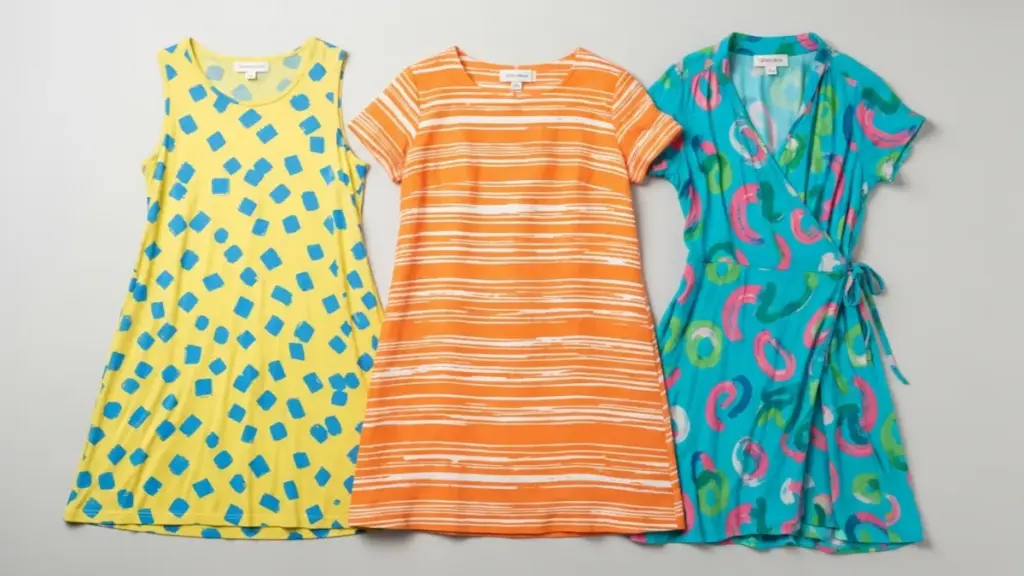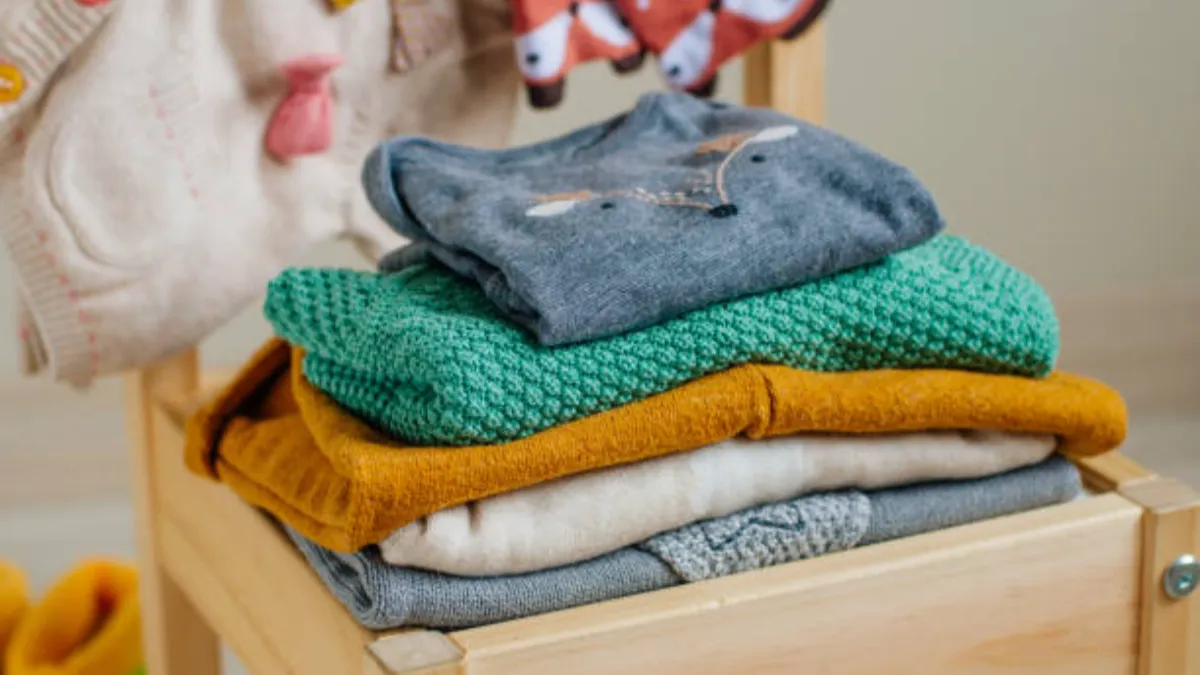In the world of fashion, clothing is a language. Every garment we wear communicates something about ourselves, our environment, and our understanding of social context. Among the most fundamental distinctions in this language is the one between casual and formal wear. For women, the dress remains a cornerstone of the wardrobe, and understanding the nuances that separate a casual dress from a formal one is essential—not just for the wearer, but for the designers and brands that create them.
What is Casual Dress?

A casual vestido prioritizes everyday comfort and ease. Its primary goal is to offer flexibility and relaxation, making it ideal for settings where formal dress codes are not required. Casual dresses tend to have loose, relaxed silhouettes—think T-shirt dresses, shift styles, and maxi dresses. Materials such as cotton, linen, and denim dominate, offering durability and breathability. These dresses prioritize practicality and personal expression, allowing wearers to adapt to various casual occasions. Whether for a day at the park, a brunch date, or running errands, casual wear is all about comfort and convenience.
What is Formal Dress?
A formal dress caters to events with a specific dress code—like black-tie or evening wear. It features structured, sophisticated designs, and designers craft it from high-end materials like silk, satin, and velvet. Formal dresses often showcase intricate details such as beadwork or embroidery and are tailored to ensure a perfect fit and shape. These dresses express respect for a special event, elevating the wearer’s appearance. Whether for weddings, galas, or state dinners, formal wear embodies luxury, tradition, and elegance, with clear guidelines for what is deemed appropriate.
Casual Dress vs Formal Dress

The fundamental demarcation between casual and formal dresses lies in their intent. A casual dress is expressive y functional. A formal dress is prescriptive y celebratory. This core difference dictates every other choice in its design, from fabric to cut.
A casual dress is approached with a mindset of “What do I feel like wearing?” while a formal dress is chosen by asking, “What is appropriate for this event?” The casual dress moves with the wearer, while the formal dress often shapes the wearer, using structure to create a specific, elegant silhouette.
For a clearer overview, here is a direct comparison of their primary attributes:
| Característica | Casual Dress | Formal Dress |
| Primary Intent | Comfort, personal expression, everyday wear. | Adherence to dress code, elegance, celebration. |
| Ocasión | Daily errands, informal lunches, relaxed weekends. | Weddings, galas, formal dinners, award ceremonies. |
| Common Fabrics | Cotton, jersey, linen, denim, rayon, polyester. | Silk, satin, velvet, chiffon, lace, crepe, taffeta. |
| Silueta | Relaxed, unstructured (shift, maxi, wrap). | Structured, defined (ballgown, sheath, mermaid). |
| Typical Lengths | Mini, knee-length, midi, maxi. | Knee-length (cocktail), tea-length, floor-length. |
| Construction | Simple seams, often unlined, elastic elements. | Complex tailoring, linings, darts, boning, hand-finishing. |
| Accesorios | Sneakers, sandals, totes, denim jackets. | Heels, clutches, fine jewelry, shawls/wraps. |
When to Choose Casual Dress vs Formal Dress
Navigating dress codes is a critical social skill. The invitation is almost always the first and most important clue.
Choose a Casual Dress When:
- The invitation explicitly states “casual.”
- The event is held during the day (e..g, a barbecue, a park picnic, a daytime festival, or a brunch).
- The venue is informal, such as a private home, a beach, a cafe, or a public park.
- The gathering is with close friends or family in a relaxed setting.
- The term “dressy casual” or “smart casual” is used. This hybrid category calls for an elevated casual dress—perhaps a polished wrap dress or a linen sheath—paired with more stylish accessories like wedges or a leather sandal, but it stops short of formalwear.
Choose a Formal Dress When:
- The invitation specifies “black-tie,” “black-tie optional,” “formal,” or “white-tie.”
- The event is a wedding (unless specified as casual), a gala, a formal charity ball, or an opera opening night.
- The event takes place in the evening (typically after 6 PM) at an elegant venue, such as a ballroom, a high-end hotel, a country club, or a formal banquet hall.
- “Cocktail attire” is requested. This is a semi-formal category. It requires a dress that is more sophisticated than daytime wear but less opulent than a full-length gown. A sophisticated knee-length or midi dress in a material like crepe or lace is the standard.
Casual vs Formal Dress Materials

The soul of a dress is its fabric. The material dictates its drape, silhouette, and tactile quality, and it is the most immediate signifier of formality.
Casual Dress Materials are chosen for wearability.
- Cotton: This natural fiber is the king of casual. It is breathable, soft, and durable. It appears as simple-woven poplin, soft T-shirt jersey, textured chambray (reminiscent of denim), or crisp seersucker.
- Linen: Prized for its lightness and breathability, linen is the epitome of warm-weather casual elegance. Its natural tendency to wrinkle is considered part of its charm.
- Rayon/Viscose: These semi-synthetic fibers are popular for their soft feel and excellent drape, often mimicking the fluidity of more expensive silks but at an accessible price point.
- Denim: A sturdy, utilitarian fabric that, when cut into a dress, creates a look of rugged, timeless style.
Formal Dress Materials are chosen for luxury.
- Silk: The ultimate luxury fiber, silk delivers natural lustre, incredible softness, and a graceful drape. It can feel light and airy (chiffon, organza), smooth and liquid (charmeuse), or crisp and structured (shantung, dupioni).
- Satin: A weave rather than a fiber (made from silk, polyester, or blends), satin features a high-sheen, glossy surface and a dull back. Designers often use it to create an opulent look, making it a favorite for evening gowns.
- Velvet: A dense, tufted fabric with a short pile, velvet offers deep color saturation, softness, and a rich, plush texture. Designers typically choose it for cooler-weather formal events.
- Lace: From delicate Chantilly to heavily corded Alençon, lace brings intricate texture and romance. Designers use it either as an overlay or as the primary fabric for formal or cocktail dresses.
Our Expertise as a Professional Dresses Manufacturer
This distinction in materials is central to us as a private label garment manufacturer. The renowned textile hubs in Hangzhou, for example, provide an incredible spectrum of materials. Sourcing a high-quality silk crepe for a formal gown versus a durable, soft-brushed cotton for a casual women dress line involves entirely different supply chain and quality control processes. At Prendas de vestir de Hangzhou, our expertise lies in navigating this complexity. We partner with brands to select the perfect material that aligns with their design intent and quality standards, from everyday essentials to couture-level pieces. You can explore the diversity of styles we help create, from casual to formal, on our women’s dress collections page.
The Tailoring Difference Between Casual and Formal Dresses
How a dress is constructed is a clear indicator of its intended use. Tailoring is the “architecture” of the garment, and it differs profoundly between casual and formal categories.
Casual Dress Tailoring is rooted in simplicity and scalability.
- Construction: Seams are often straightforward (e.g., side seams, shoulder seams).
- Fit Elements: Ease is built in. Fit is often achieved through simpler means, such as elasticated waistbands, drawstrings, or forgiving cuts like A-lines and trapeze shapes.
- Lining: Casual dresses are frequently unlined or only partially lined for breathability and to reduce production costs.
- Finishing: Hems and seams are typically machine-finished, durable, and functional. Top-stitching may be used as a design element.
Formal Dress Tailoring is complex and focused on fit and form.
- Construction: The pattern-making is more intricate. It employs techniques designed to shape the garment to the body.
- Fit Elements: You will find a heavy reliance on darts, princess seams, and boning (in bodices) to create a defined structure.
- Lining: Formal dresses are almost always fully lined. This serves multiple purposes: it conceals the inner construction (seams, boning), it helps the dress hang correctly, and it provides a smooth, comfortable layer against the skin.
- Finishing: A high value is placed on clean, invisible finishing. Hems may be hand-rolled or finished with horsehair braid to add structure. Zippers are often invisible, and closures like hooks-and-eyes are meticulously hand-sewn.
Color Palettes: Casual vs Formal Dress Color Schemes
While color is deeply personal, established conventions guide the palettes for casual and formal wear.
Casual Dress Color Schemes are virtually limitless. This category embraces the full spectrum of color and pattern.
- Bandera: Bright, saturated hues, soft pastels, earthy neutrals, and classic white and black are all equally appropriate.
- Patterns: This is the domain of bold expression. Florals, stripes, polka dots, gingham, tie-dye, and abstract geometric prints are all staples of the casual wardrobe. The choice is driven by trend and personal taste.
Formal Dress Color Schemes are traditionally more restrained and deliberate.
- Bandera: Classic, deep, and rich tones dominate. Black remains the perennial standard for formal elegance. Designers highly favor jewel tones—such as emerald green, sapphire blue, ruby red, and amethyst purple. Metallics (gold, silver, bronze) also appear frequently for their celebratory feel.
- White/Ivory: In Western cultures, a full-length white or ivory gown traditionally belongs to the bride at a wedding. Guests typically avoid these colors unless the dress features a heavy pattern or clearly does not resemble bridal wear.
- Patterns: When designers use prints in formalwear, they typically choose sophisticated, large-scale designs—such as bold floral brocade, artistic watercolor motifs, or subtle tone-on-tone jacquard—rather than the busy, small-scale prints common in casual dresses.
Accessories for Casual vs Formal Dress
Accessories do not just complement an outfit; they are integral to classifying it. The same simple black dress can be rendered casual or formal entirely through styling.
Accessorizing a Casual Dress:
- Footwear: The options are broad: white sneakers, flat sandals, espadrilles, loafers, or ankle boots.
- Handbags: Function and style merge. Totes, crossbody bags, backpacks, and slouchy hobo bags are all appropriate.
- Outerwear: You can layer a denim jacket, a casual cardigan, a utility jacket, or a leather moto jacket over a casual dress.
- Jewelry: This is a space for personality. Layered delicate necklaces, statement earrings made of non-precious materials, wooden bangles, or simple hoops all work.
Accessorizing a Formal Dress:
- Footwear: Elegance is key. This almost always means heels (pumps, stilettos, elegant strappy sandals). Dressy flats in a pointed-toe or ballet style made of fine materials can also be appropriate.
- Handbags: Small, impractical, and beautiful. The clutch, minaudière, or a small, structured evening bag is the standard. A large daytime bag is a significant faux pas.
- Outerwear: To cover up, one would choose a formal wrap, a silk or cashmere shawl, a bolero, or a tailored evening coat.
- Jewelry: This calls for your best pieces. Fine jewelry (diamonds, pearls, gemstones) or high-quality, bold “costume” jewelry designed for evening wear is the norm.
Conclusión
The difference between a casual dress and a formal dress is not merely a matter of length or sparkle. It is a complete sartorial language, where fabric, cut, color, and accessories work in concert to send a clear message. The casual dress is the prose of daily life—flexible, personal, and built for comfort. The formal dress is the poetry of special occasions—structured, elevated, and rich with tradition.
Understanding these key features empowers you to navigate any social or professional setting with confidence. For brands looking to develop a line of women’s dresses, mastering this client-centric distinction is the foundation of a successful collection. It ensures that you are providing not just a beautiful garment, but the right garment for the moments that matter in your customer’s life. For more insights into the manufacturing process behind the styles, visit us at Prendas de vestir de Hangzhou.




